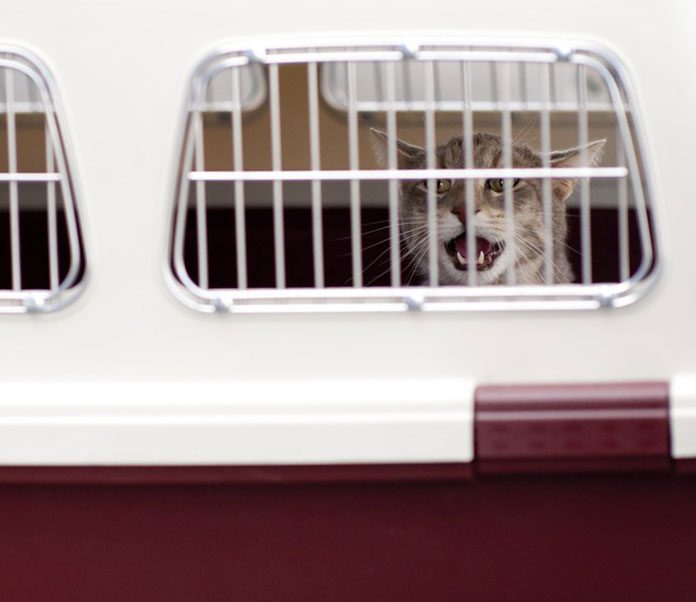Crate training can be very difficult as the first feeling of the pet towards it will be loathsome. One of the reasons is that the animal movement becomes very restricted.
Pets which are kept in a crate, will also find it difficult as the size will be even more limited when compared to the cage. Things will be even more complicated for pets which are habituated to roam freely in the home and as well as outside, like in a back yard.
In this case, experts suggest classical conditioning. This approach consists of counter-conditioning and desensitizing. The cat must be made familiar with the environment within the crate. This is known as desensitization. And to alter the pet’s negative attitude to a positive one is known as counter-conditioning.
A very simple method is to place the crate in or near the pet’s living quarters. At meal time, the food must be placed inside the crate, so that the pet will go inside the crate to eat the food. If the pet seems hesitant, the door of the crate can be left open with the food placed inside the crate. There are chances that the animal will go inside and eat it after some time. And if the pet doesne eat food even after many hours, the owner must remove the food from the crate and feed the pet near the crate. Gradually the distance between the crate and the food must be decreased, finally till the pet starts eating the food inside the crate. Also when the animal starts entering the crate willingly, the care taker must try to use a cue word when he places the food inside the crate. Words such as crate? food?or come in?can be used while opening the door of the crate to place the food inside.
The pet can get scared that the owner might lock him up if it enters the crate. If this is the case, the owner, after placing the food within the crate, should leave that area and go far away. This way the pet will feel safer and comfortable to approach the crate. Once the pet gets habituated to eat within the crate, the owner must try to come closer at least by a foot every week, till he can stand near the crate.
After the pet gets adjusted to all these, the next big step is to shut the door of the crate, not altogether but for just a short period of time. Once the animal gets familiar with this, place only small quantity of food inside the crate and make him enter the crate in the presence of the owner. After it enters the crate, the door must be locked with the pet inside. When the pet finishes the food which was placed inside the crate, the rest of the food must be fed through the crate bars. The pet will not only feel comfortable about entering the crate but also being locked within it. In the beginning the food must be fed immediately through the bars, at once. Then the food should be divided and time gap should be given in between each feeding session. The gap should be at least of five minutes or even more.
The pet can sometimes but very rare have a grudge against the material or size of the crate. In such cases, the crate must simply be replaced with the choice of the pet. Once the pet gets trained with food, it can also be provided with toys inside the crate. The owner can use a toy to lead the pet near and then inside the crate.


































